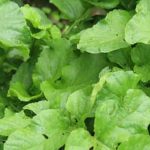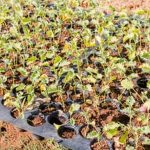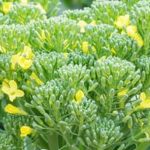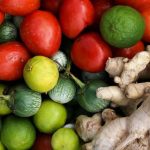Welcome to the world of Pacific Northwest vegetable gardens, where lush green landscapes and abundant harvests await. Located in a region known for its picturesque beauty and fertile soils, these gardens provide an oasis for growing a wide variety of vegetables. From vibrant lettuce leaves and juicy tomatoes to crisp carrots and plump zucchinis, the Pacific Northwest offers endless possibilities for homegrown goodness.
The unique climate and growing conditions in the Pacific Northwest make it an ideal haven for thriving vegetables. With mild temperatures, ample rainfall, and rich soil, this region provides the perfect backdrop for cultivating bountiful gardens year-round. Whether you’re a seasoned gardener or just starting out, the Pacific Northwest offers a wealth of opportunities to indulge in your passion for fresh produce.
When it comes to choosing vegetables for your Pacific Northwest garden, you’ll find an array of options that thrive in this region’s specific climate and soil conditions. However, selecting the right varieties can be overwhelming without proper guidance. In this comprehensive guide, we will take you on a journey through different vegetable types suitable for Pacific Northwest gardens, helping you make informed choices that will ensure a successful harvest.
Embark on an adventure of nurturing your own piece of paradise in the Pacific Northwest as we explore the rich bounty that awaits in these vegetable gardens. From preparing the soil and planting at the right time to dealing with common pests and diseases, we will equip you with all the essential tips and tricks to create a flourishing garden that brings joy throughout the seasons.
So roll up your sleeves, grab your gardening tools, and let’s dive into this exciting journey together.
Climate and Growing Conditions in the Pacific Northwest
The Pacific Northwest region of the United States is known for its mild, temperate climate and abundant rainfall, making it a perfect oasis for growing vegetables. The unique climate of the Pacific Northwest provides a long growing season and relatively mild winters, allowing gardeners to cultivate a wide variety of vegetables throughout the year.
With an average annual rainfall ranging from 30 to 60 inches, the Pacific Northwest enjoys moist conditions that are ideal for vegetable growth. This consistent moisture helps to keep plants hydrated and promotes healthy root development. Additionally, the region’s moderate temperatures create an optimal environment for many vegetables to thrive.
The coastal areas of the Pacific Northwest experience cool summers and mild winters, while inland regions have warmer summers and colder winters. These variations in temperature allow gardeners to grow a diverse array of vegetables that are suited to their particular microclimate.
In general, cool-season vegetables such as leafy greens, broccoli, cauliflower, and root crops like carrots and radishes can be grown throughout most of the year. Warm-season crops like tomatoes, peppers, cucumbers, and corn can be grown during the hotter summer months.
To better understand the climate patterns in the Pacific Northwest and determine which vegetables will flourish in your garden, it is important to consult local gardening resources or reach out to experienced gardeners in your area. By understanding the unique growing conditions in the Pacific Northwest and choosing appropriate vegetable varieties, you can enjoy a successful vegetable garden all year long.
| Climate | Growing Conditions |
|---|---|
| Mild summers and winters | Allows for year-round cultivation |
| Abundant rainfall (30-60 inches) | Provides consistent moisture for plant hydration |
| Variations in temperature | Allows for cultivation of a diverse range of vegetables |
Choosing the Right Vegetables for Pacific Northwest Gardens
When planning your Pacific Northwest vegetable garden, it is essential to choose vegetables that thrive in the unique climate and growing conditions of the region. The Pacific Northwest boasts a mild, maritime climate with abundant rainfall, making it an ideal environment for growing a wide variety of vegetables. However, certain vegetables are better suited to this region than others.
One key factor to consider when selecting vegetables for your Pacific Northwest garden is their tolerance for cool temperatures and moisture. Vegetables such as kale, lettuce, spinach, and broccoli thrive in the cool and wet conditions of the region. These cold-hardy crops can be planted early in spring or late in summer to take advantage of cooler temperatures.
On the other hand, warm-season vegetables like tomatoes, peppers, corn, and beans require higher temperatures and longer periods of sun exposure to produce a bountiful harvest. While these vegetables may not be as well-suited to the Pacific Northwest’s cool climate, they can still be grown successfully by choosing varieties with shorter maturation times or by utilizing techniques such as using greenhouses or row covers to extend the growing season.
| Season | Suitable Vegetables |
|---|---|
| Spring | Lettuce, spinach, radishes, peas |
| Summer | Tomatoes (early ripening varieties), cucumbers, zucchini |
| Fall | Cabbage, kale, carrots |
| Winter | Kale, Brussels sprouts, leeks |
By selecting vegetables suitable for each season, you can ensure a diverse and consistent harvest year-round. Additionally, consider planting a variety of vegetables with different maturation times to stagger your harvest and maximize the productivity of your garden.
With this comprehensive guide in mind, you can confidently choose the right vegetables for your Pacific Northwest garden. Whether you prefer cold-hardy greens or heat-loving tomatoes, there is a wide range of options available to fulfill your gardening ambitions in this bountiful region.
Preparing the Soil
Understanding Soil Composition
Before starting a vegetable garden in the Pacific Northwest, it is crucial to have a good understanding of the soil composition in your specific area. The Pacific Northwest has a diverse range of soil types, including clay, loam, and sandy soil. Each soil type has its own characteristics and requirements for optimal vegetable growth.
Clay soil, which is common in many parts of the Pacific Northwest, tends to hold water and nutrients but can become compacted easily. This can lead to poor drainage and hinder root development. Loam soil, on the other hand, is often considered ideal for vegetable gardening as it has a balanced combination of sand, silt, and clay that provides good drainage while retaining moisture and nutrients.
Improving Drainage
To optimize drainage in your Pacific Northwest vegetable garden, there are several techniques you can employ. One effective method is raised bed gardening. By creating raised beds, you can ensure that excess water drains away more efficiently. Additionally, amending heavy clay soils with organic matter such as compost or peat moss can help break up compacted soil and improve drainage.
Another way to enhance drainage is by implementing proper irrigation practices. Over-watering can lead to waterlogged soil, so it is important to monitor the moisture levels regularly. Using drip irrigation or soaker hoses instead of overhead sprinklers can target the root zone more effectively without saturating the entire garden bed.
Maximizing Nutrients
Adding organic matter such as compost or aged manure to your soil is an excellent way to boost nutrient content in Pacific Northwest vegetable gardens. Incorporating these amendments into the topsoil before planting will enrich the soil with essential nutrients necessary for healthy plant growth.
Regularly testing your soil’s pH level is also essential for identifying any nutrient deficiencies or imbalances. Most vegetables prefer a slightly acidic to neutral pH range of 6.0 to 7.0. If the pH level is too low or too high, adjusting it by adding lime or sulfur can help create a more favorable environment for your vegetables.
Planting Schedule for Pacific Northwest Vegetables
The Pacific Northwest region experiences a unique climate that allows for a long growing season and the opportunity to grow a wide variety of vegetables throughout the year. To make the most out of your vegetable garden in this region, it is important to follow a planting schedule that takes into account the specific needs of each type of vegetable and the changing seasons.
To help you plan your planting schedule, here is a comprehensive guide:
- Early Spring (March-April): As soon as the soil can be worked, start planting cool-weather crops such as lettuce, kale, spinach, radishes, and peas. These vegetables thrive in cooler temperatures and can withstand light frosts.
- Late Spring (May-June): With the arrival of warmer temperatures, it is time to plant warm-season crops like tomatoes, peppers, cucumbers, zucchini, beans, and corn. Be sure to wait until all danger of frost has passed before planting these heat-loving plants.
- Summer (July-August): In mid-summer, you can still sow crops like carrots, beets, and Swiss chard for a late summer or fall harvest. Additionally, consider succession planting to ensure a continuous supply of fast-growing vegetables such as lettuce and radishes.
- Fall (September-October): As temperatures begin to cool down again, focus on planting cool-weather crops that will thrive in the coming months. Plant cabbage, broccoli, cauliflower, Brussels sprouts, and winter greens like kale and collards for an abundant fall harvest.
- Winter (November-February): While outdoor gardening may slow down during winter months due to cold temperatures and shorter daylight hours in the Pacific Northwest region, you can still grow certain cold-hardy crops like garlic and overwintering onions that will produce bountiful harvests in early spring.
By following this planting schedule, you can maximize your yield throughout the different seasons, ensuring a continuous supply of fresh and delicious vegetables from your Pacific Northwest garden.
Remember to keep track of the specific planting dates for each vegetable in your journal or gardening calendar, as these dates may vary slightly depending on your specific location within the Pacific Northwest region.
Essential Maintenance and Care
Watering and Irrigation
One of the essential aspects of maintaining a healthy Pacific Northwest vegetable garden is proper watering and irrigation. The region’s climate, characterized by mild summers and abundant rainfall, provides an ideal environment for vegetables to thrive. However, occasional dry spells during the summer months may require additional watering. It is important to ensure that your plants receive adequate moisture without overwatering, as this can lead to rot or other water-related diseases.
To determine when to water, check the moisture level in the soil by inserting your finger about an inch deep. If it feels dry at this depth, it is time to water your plants. Deep, infrequent watering is preferable to shallow and frequent watering as it encourages deeper root growth. Using soaker hoses or drip irrigation systems can help deliver water directly to the plant roots while minimizing water evaporation.
Weeding and Mulching
Weeds compete with your vegetable plants for nutrients, sunlight, and space. Regular weeding is crucial for keeping your Pacific Northwest vegetable garden thriving. To effectively control weeds, consider using organic mulch such as straw or wood chips around your plants. This will not only suppress weed growth but also help retain soil moisture and regulate soil temperature.
When weeding, be careful not to disturb the roots of your vegetables while removing the weeds. Hand-pulling weeds or using a hoe for larger areas are effective methods. For stubborn weeds that won’t easily come out, gently loosen the soil around them before pulling them out completely.
Pruning and Staking
Certain vegetable varieties in Pacific Northwest gardens may require pruning or staking for proper growth and support. Tomatoes, cucumbers, and peas are examples of vining vegetables that benefit from being staked or trellised. Stakes provide support for these plants’ stems while keeping their fruits off the ground – reducing the risk of disease and pests.
Regular pruning also helps improve air circulation within your vegetable garden, reducing the likelihood of fungal diseases. Remove any damaged or diseased leaves or branches promptly to prevent the spread of infections. Additionally, pinch off suckers from tomato plants to direct energy towards fruit production.
By implementing proper watering techniques, managing weeds effectively, and providing appropriate support through staking and pruning, you can ensure the optimal growth and health of your Pacific Northwest vegetable garden. Taking care of these essential maintenance tasks will set the stage for a bountiful harvest in your homegrown vegetable paradise.
Common Pests and Diseases in Pacific Northwest Vegetable Gardens
As with any type of garden, Pacific Northwest vegetable gardens can be susceptible to pests and diseases. However, by taking proactive measures and implementing effective natural remedies, you can keep your plants healthy and thriving. Here are some common pests and diseases that you may encounter in the region, along with tips on how to prevent them and treat them naturally.
- Slugs and Snails: These slimy creatures are a common problem in Pacific Northwest gardens, especially in moist conditions. To prevent slug and snail infestations, create barriers around your plants using materials like crushed eggshells or diatomaceous earth. You can also attract natural predators of slugs and snails, such as frogs or birds, to your garden by providing water sources or bird feeders.
- Aphids: Aphids are small insects that suck the sap from plants, causing stunted growth and distorted leaves. To deter aphids naturally, introduce beneficial insects like ladybugs or lacewings into your garden. Additionally, you can make a homemade insecticidal soap by mixing together water, dish soap, and a few drops of vegetable oil. Spray this solution onto affected plants to control aphid populations.
- Powdery Mildew: This fungal disease appears as a white powdery coating on plant leaves and stems. To prevent powdery mildew, ensure good air circulation around your plants by spacing them adequately apart. Avoid watering the foliage of your plants since damp conditions promote the growth of powdery mildew. If you notice signs of this disease, spray a mixture of baking soda and water onto affected areas as a natural fungicide.
By being vigilant in monitoring your plants for pests and diseases and acting promptly with natural remedies when needed, you can maintain the health of your Pacific Northwest vegetable garden without relying on harmful chemicals. Remember to stay informed about the specific pests and diseases that are prevalent in your area, as they may vary depending on your location within the Pacific Northwest region.
With proper care and attention, you can enjoy a bountiful harvest of homegrown vegetables year after year.
Harvesting and Preserving the Bounty
One of the most rewarding aspects of having a vegetable garden in the Pacific Northwest is being able to enjoy the fruits (and vegetables.) of your labor all year round. With proper preservation techniques, you can savor the flavors of your homegrown produce long after the growing season ends. Here are some tips for harvesting and preserving the bounty from your Pacific Northwest vegetable garden.
First and foremost, timing is crucial when it comes to harvesting vegetables for optimal flavor and shelf life. Different vegetables have different harvest windows, so it’s important to familiarize yourself with each crop’s specific requirements.
Some vegetables, like tomatoes and cucumbers, are best enjoyed when fully ripe, while others, such as kale and Brussels sprouts, actually benefit from a touch of frost before being picked. Take note of each vegetable’s mature size or color and check regularly for signs of ripeness to ensure that you harvest at just the right time.
Once you’ve harvested your produce, it’s important to handle them with care to prevent damage and spoilage. For delicate vegetables like lettuce and herbs, gently wash them in cold water to remove any dirt or debris.
Pat them dry using a clean towel or paper towels before storing them in breathable containers or plastic bags lined with paper towels to absorb excess moisture. Heartier vegetables like carrots and potatoes should be gently brushed clean rather than washed to avoid introducing extra moisture that can lead to rotting.
Preserving methods such as canning, freezing, pickling, dehydrating, and fermenting are all great ways to make your homegrown vegetables last throughout the year. Canning is particularly popular for Pacific Northwest gardeners since it allows them to preserve their bountiful harvests of tomatoes into delicious sauces and salsas that can be enjoyed even during the winter months.
Freezing works well for many vegetables too – blanch them in boiling water for a short period of time, then transfer them to sealed freezer bags or containers. Pickling is another fantastic preservation technique that can transform your excess cucumbers and other vegetables into tangy and flavorful pickles.
With these tips and techniques, you can make the most of your Pacific Northwest vegetable garden by ensuring your harvest doesn’t go to waste. By preserving your fresh produce through proper harvesting methods and preservation techniques, you can continue to enjoy the flavors of your garden long after the growing season has come to an end.
Inspiring Success Stories
Pacific Northwest gardeners have long been successful in growing a wide variety of vegetables in their thriving gardens. Their experiences and best practices can be a valuable source of inspiration for both novice and experienced gardeners alike. In this section, we will explore some success stories from Pacific Northwest gardeners who have achieved impressive results in their vegetable gardens.
One success story comes from Jen, a resident of Portland, Oregon. She has been gardening in her backyard for over 10 years and has learned a great deal about maximizing her yield in the Pacific Northwest climate. One of her best practices is crop rotation, which she believes helps prevent pests and diseases from taking hold in her garden.
Jen also emphasizes the importance of soil health and regularly adds compost to keep it rich and fertile. Her favorite vegetable to grow is kale because it thrives in the wetter climate of the Pacific Northwest.
Another inspiring success story comes from Mike, a gardener based in Seattle, Washington. He has transformed his backyard into a vegetable paradise with raised beds that allow him to control the quality of his soil and drainage. Mike swears by succession planting, which involves planting crops at different times to ensure a continuous harvest throughout the season. He also loves growing tomatoes because he has found certain varieties that are well-suited to the Pacific Northwest’s shorter summer season.
These success stories highlight the uniqueness and diversity of Pacific Northwest vegetable gardens. By sharing their knowledge and experiences, these gardeners inspire others to experiment with different techniques and varieties that may thrive in this region’s specific conditions. Whether you’re just starting out or looking to take your gardening skills to the next level, learning from these success stories can provide valuable insights and encouragement on your own gardening journey in the Pacific Northwest.
Conclusion
In conclusion, Pacific Northwest vegetable gardens offer an abundance of opportunities for growers to indulge in the love for homegrown veggies. The unique climate and growing conditions of the region provide a perfect oasis for thriving vegetables, creating an ideal environment for a bountiful and diverse garden.
By choosing the right vegetables that are well-suited to the Pacific Northwest, gardeners can ensure a successful harvest. Whether it’s leafy greens like kale and spinach, or cold-hardy crops like broccoli and Brussels sprouts, there are countless options to satisfy any palate. The comprehensive guide provided in this article can help gardeners make informed decisions when selecting their vegetable varieties.
Preparing the soil is crucial for optimizing nutrient levels and ensuring proper drainage in Pacific Northwest vegetable gardens. With tips and tricks designed specifically for this region’s soil composition, growers can create an optimal environment for their plants to thrive. By following the planting schedule provided, gardeners can maximize their yields throughout the different seasons, utilizing every opportunity to enjoy their homegrown produce.
Essential maintenance and care play a vital role in nurturing and protecting Pacific Northwest vegetable gardens. By staying vigilant against common pests and diseases, growers can prevent infestations and tackle issues using effective natural remedies. Finally, harvesting and preserving techniques allow gardeners to extend the enjoyment of their harvest all year long.
As we have seen through the inspiring success stories shared by Pacific Northwest gardeners, embracing this gardening journey is truly rewarding. From novice growers to experienced enthusiasts, everyone can cultivate a thriving vegetable garden full of flavor, nutrition, and satisfaction. So go ahead, embark on your own Pacific Northwest gardening adventure, and celebrate the love for homegrown veggies that will nourish both your body and soul.
Frequently Asked Questions
What vegetables can you grow in the Pacific Northwest?
The Pacific Northwest offers a favorable climate for growing a variety of vegetables. Some popular choices include tomatoes, cucumbers, peppers, lettuce, kale, carrots, beets, and broccoli. The region’s mild temperatures and abundant rainfall create an ideal environment for these vegetables to thrive.
Additionally, root vegetables like potatoes and onions do well in the moist soil characteristic of the Pacific Northwest. While these are just a few examples, there is a wide range of vegetables that can be successfully grown in this region.
When should I start a vegetable garden in Washington state?
The timing for starting a vegetable garden in Washington state depends on various factors such as the specific location within the state and the desired vegetables to be grown. Generally, it is recommended to start planting after the last frost date which typically occurs in late March or early April.
However, certain cool-season vegetables like peas, lettuce, spinach, and radishes can be planted as early as February if weather conditions permit. It’s important to consult local gardening resources or extension services to determine the exact timing for your specific area.
What vegetables should not be planted next to each other in a garden?
Companion planting involves strategically placing certain plants together to maximize growth and deter pests naturally. As such, some gardeners choose not to plant certain vegetables next to each other due to potential negative interactions or competition for resources. For instance, it is generally advised not to plant members of the nightshade family (such as tomatoes and peppers) next to potatoes or eggplants since they are susceptible to similar diseases like blight and may increase the risk of infection spreading.
Similarly, legumes like beans or peas should not be planted alongside onions or garlic since they may inhibit their growth due to their different nutritional requirements. Researching companion planting guidelines specific to each vegetable can help determine suitable pairings and avoid any potential negative effects on growth and crop yield.

If you’re looking to get into vegetable gardening, or are just looking for some tips on how to make your current garden better, then you’ve come to the right place! My name is Ethel and I have been gardening for years. In this blog, I’m going to share with you some of my best tips on how to create a successful vegetable garden.





